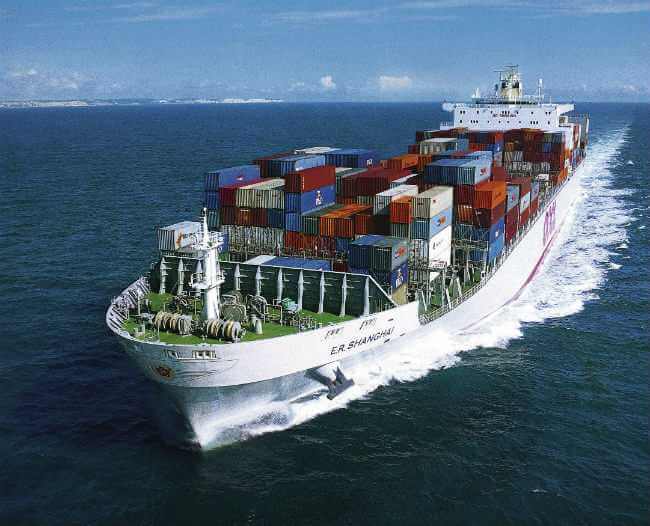Technology has made warehouse processes more efficient, reducing the need for human labor through automating repetitive tasks so employees can focus on more complex tasks. This article will present the main reasons you should invest in automating your warehouse. We will also discuss the different types of automation available and the key benefits of adopting this technology. By the end of this text, you will also see how the Shipedge WMS automation process can change the course of your company.
What is Warehouse Automation?
Warehouse automation revolutionizes inventory movement within and outside warehouses to customers with minimal human intervention. With a warehouse automation project, a business can eliminate labor-intensive tasks that involve repetitive physical work, manual data entry, and analysis.
READ MORE: Warehouse Management System Software: A Starting Guide
How Does Warehouse Automation Work?
Warehouse automation can be achieved through various means, such as machines or robots that perform inventory-related processes from arrival to departure from the warehouse.
This doesn´t mean that humans will be replaced. Still, it can be seen as a competitive advantage for companies to use machines to maintain work continuity for long hours, thereby increasing worker satisfaction. Workers will have a greater willingness to perform their tasks safely and efficiently.
Warehouse automation also does not strictly mean that robots have become a part of your fulfillment processes; some features of warehouse automation cover everything from unloading trailers to order fulfillment. Warehouse automation is becoming increasingly important for companies that own warehouses and want to expand their sales volumes and reduce warehouse bottlenecks. See below for the different types of warehouse automation.
Discover how our WMS can improve your business
Types of Warehouse Automation Technology
Warehouse Management System
Although a Warehouse Management System may not entirely eliminate all manual processes, it has the capability to significantly reduce them. Automating your warehouse with a WMS like Shipedge is a strategic move that not only increases efficiency, but also significantly reduces the likelihood of errors, which can be costly in both time and resources. Shipedge’s Warehouse Management System is designed to streamline operations, providing real-time inventory visibility into inventory, orders, and shipping.
Best Rate Shipping
Shipedge’s system can automatically select the most cost-effective shipping option based on factors such as package size, weight, and destination. Not only does this automation save warehouse managers time, it also reduces shipping costs.
Integrations
One of the most important automations for warehouses fulfilling eCommerce orders is the ability to connect to multiple selling channels. With seamless integrations with 70+ platforms like Shopify, Amazon, and Walmart, the system is designed to ensure a smooth flow of data across all your business operations.
Discover how our WMS can improve your business
Automated Sorting Systems
Sorting systems are technological solutions such as:
- RFID
- Barcodes
- Scanners
- Sensors
These systems direct items to the correct location or bin, such as returns processing points, picking zones, packing stations, or assembly lines. They use various technologies to identify and separate items, ensuring they are directed to the correct location for processing.
That will allow employees to efficiently divide and categorize items in a warehouse or production process. Using those technologies, items are sorted into categories for increased efficiency and accuracy.
READ MORE: Optimize Your Warehouse Layout for Maximum Efficiency and Productivity
How Should You Automate Your Warehouse?
To automate a warehouse, it is necessary to develop a project plan that involves identifying stakeholders, creating a detailed project schedule, conducting a thorough risk assessment, and defining clear goals and deliverables.
In the first step, start by creating a plan that involves various stakeholders. This plan should include a project schedule, a risk assessment, and specific goals and objectives.
After forming a support team and selecting a project manager, you can establish a timeline and deliverables calendar.
To ensure successful implementation:
- Seek input from management at all levels: including corporate leaders and warehouse managers from various locations.
- Research different warehouse automation options: Once you’ve established your requirements, schedule demonstrations to identify the best fit for your business goals, customer demand, and available resources.
Steps for Automating Your Warehouse
1 – Establish an implementation team
Form a group of internal stakeholders who possess knowledge of your warehouse’s current performance, capabilities, and challenges and are aware of any technology gaps that need to be addressed. Consider enlisting the help of third-party experts who specialize in supply chain automation and have experience working with businesses in your industry and with similar warehouse operations.
Discover how our WMS can improve your business
2 – Gather essential information
Efficient warehouse automation depends on accurate and comprehensive data about your supply chain and critical warehouse operations. To ensure a smooth integration of new automation technology, it is essential to assess your current data collection process and infrastructure. Assigning the data migration responsibility to competent IT personnel is advisable.
3 – Assess your inventory management protocols
Efficient warehouse operations require robust inventory management procedures. Before integrating an automation system, review and refine your standard operating procedures (SOPs) for inventory control.
Develop SOPs for various aspects of inventory management, such as:
- Purchasing.
- Shipping.
- Receiving.
- Customer satisfaction.
- Inventory loss.
Identify the KPIs, key performance indicators that will be used to gauge the success of automated inventory control processes and procedures. Additionally, evaluate your current inventory accounting method, whether periodic or perpetual, and determine how automation will impact it. Check out the inventory control guide for further information.
READ MORE: 9 ESSENTIAL WAREHOUSE KPIS TO MEASURE PERFORMANCE
4 – Implement a warehouse management system (WMS)
Warehouse management systems have software modules that enable the tracking and management of inventory, streamline warehouse operations, decrease labor costs connected to manual tasks, and enhance customer service. A contemporary WMS is designed to work with mobile devices and should be able to integrate with your current enterprise software.
5 – Decide on the type of warehouse automation you require
Do you want automation to enhance back-office warehouse operations, reduce manual data entry, and lower labor costs? Or, are you planning to expand your warehouse by adding new locations or implementing advanced physical processes automation such as GTP systems and robots? Identifying the kind of warehouse automation that suits your business objectives and customer requirements.

Why Should You Automate Your Warehouse?
Warehouse automation plays a crucial role in supply chain optimization by minimizing the time, labor, and mistakes caused by manual operations. The next topic will present some of the main benefits of automating your warehouse.
Main benefits of warehouse automation
1 – Cut picking Costs
Order picking is the costliest operation in a warehouse, often accounting for over 55% of operational expenses. It’s a labor-intensive and time-consuming process that involves more than simply retrieving items from a shelf or rack.
Pickers may spend up to 50% of their time navigating the warehouse. In manual picking systems, workers are restricted to filling one order at a time and rely on paper lists that may cause them to visit the same warehouse section multiple times per hour or day. This results in inefficient use of time and energy.
Look for a WMS that uses advanced algorithms to optimize picking routes, which increases efficiency and reduces overall labor costs. The pickers in your warehouse no longer have to guess at the best routes to take, the system will tell them exactly where to go and how to get there as they make their way through the warehouse.
2 – Save floor space
The costs associated with picking errors can be multifaceted. It’s not just about the cost of packing and shipping the item to the customer. You also need to consider the expenses involved in shipping, returning the item to the warehouse, processing it, and putting it back into inventory. Additionally, there are expenses related to selecting, packing, and shipping the accurate item. Additionally, there’s the long-term financial impact of customer dissatisfaction and damage to the company’s reputation. As a result, misspeaks can be quite expensive.
Warehouse automation reduces the need for human intervention, thus minimizing the risk of manual errors and enhancing inventory control. Automated systems usually come equipped with advanced picking mechanisms and real-time inventory tracking, which provide precise information on the location and quantity of items. This results in a substantial increase in picking accuracy, approaching 100%.
When you consider the possible expense of an automated warehouse system, it generates substantial cost savings. In the long term, they improve customer satisfaction and retention, encourage repeat purchases, and eventually boost revenue and profit margins.
READ MORE: Maximize your e-commerce success with real-time inventory management
3 – Lowering cost labor with replacement warehouse automation
As warehouses become more densely packed with pallets, shelves, and freestanding structures, navigating them can require a large workforce. However, warehouse automation solutions can enable your employees to work smarter and with fewer numbers.
For example:
Automation can bring the required item directly to the employee’s workstation or significantly reduce the time spent traveling between pick spots.
Even when employees must walk to an item’s location, they can access information about its location and pick quantity. These benefits optimize your workforce and substantially increase productivity compared to manual methods. You will require a smaller workforce to complete warehouse tasks, allowing you to reduce labor costs or reassign additional warehouse staff to other duties or more strategic projects.
4 – Automating tasks can reduce costs associated with injuries and absences
When workers are required to perform physical tasks in a warehouse, there is an increased risk of injury due to the need for frequent stretching, bending, twisting, pushing, pulling, or jumping to reach items that are not easily accessible. Over time, this can lead to slips, falls, and injuries from improperly stacked items falling from heights.
Automated warehouse systems minimize manual labor, reducing or eliminating the distances and heights workers have to cover to process orders. This results in less fatigue among staff, making them less prone to errors.
When warehouse workers have to retrieve items, automation ensures that this happens within the “golden zone” – the range of shelves between waist height and shoulder height for an average person. Within this zone, workers can pick up or move items without bending, stretching, climbing, or performing other physically demanding movements. This reduces the risk of worker injuries.
In addition to these measures, automated warehouses have safety features that protect employees, such as emergency stop buttons, light curtains, presence-sensitive safety mats, and more.
As you increase the level of your warehouse automation the easier will be for you to get things done for marketing and sales. However, it’s important to note that automation comes with significant upfront expenses, including investments in software applications, new equipment, hiring expert staff, and revising operating procedures. To optimize those expenses, one valuable solution is Shipedge WMS.
Shipedge WMS: Automating Your Warehouse
With Shipedge WMS, businesses can automate and optimize their warehouse processes by reducing errors and increasing efficiency. The system’s advanced reporting and analytics tools provide valuable insights into warehouse performance and can help businesses make data-driven decisions. Additionally, Shipedge WMS offers personalized customer support and onboarding services to ensure a smooth transition to the new system, an excellent help for those looking for new solutions to improve their warehouse optimization. Meet our solution now, and don´t forget to follow us on our social media for more information.
Discover how our WMS can improve your business










0 Comments